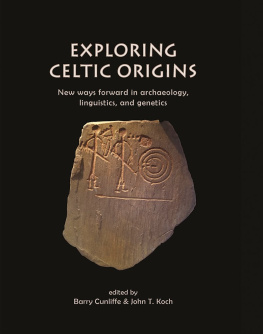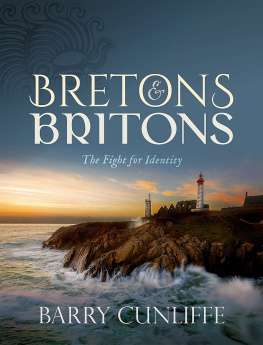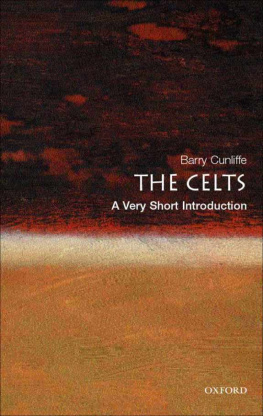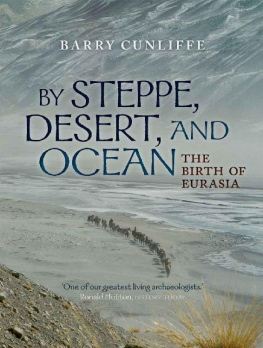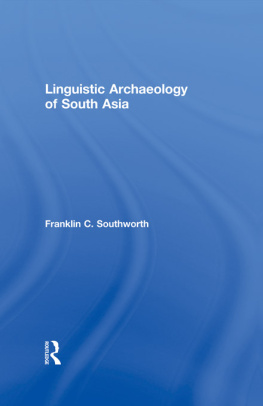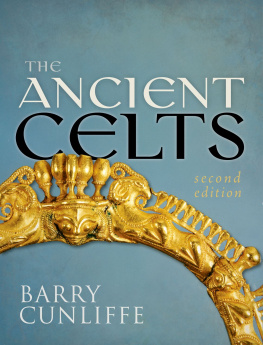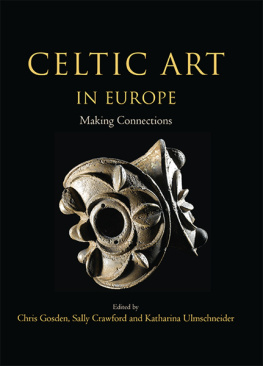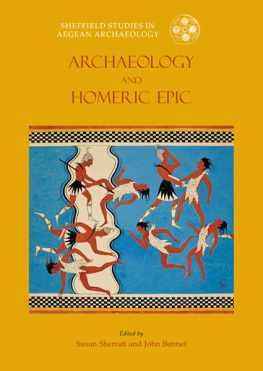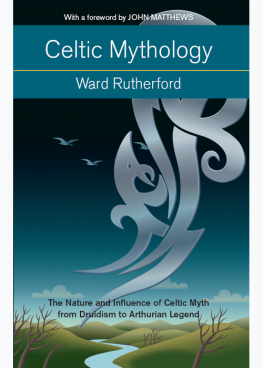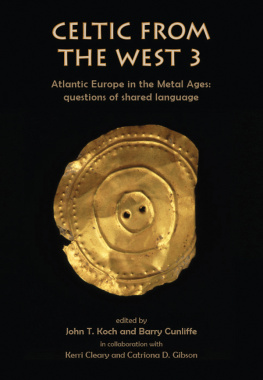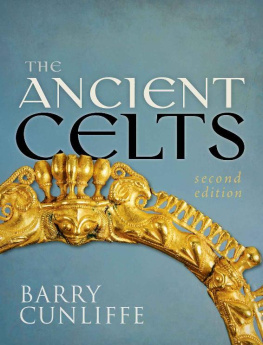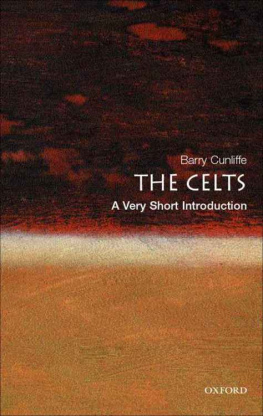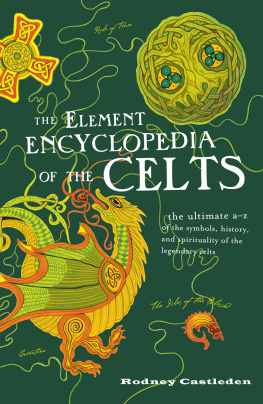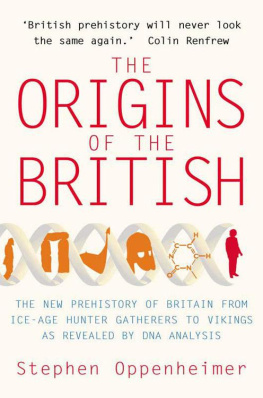Page List
ACKNOWLEDGEMENTS
The research presented in this book was supported with a grant from the Arts and Humanities Research Council (AHRC): Research Grant Proposal AH/K002600/1, funding the project 'Atlantic Europe in the Metal Ages (AEMA): questions of shared language.' Amgueddfa Genedlaethol Cymru/ National Museum of Wales and Comisiwn Brenhinol Henebion Cymru/ Royal Commission on the Ancient and Historical Monuments of Wales acted as partners in the AEMA project. Within this volume, their partnership contributions include, respectively, Figures 4.1 and 4.10, and 4.17 and 4.18. The editors thank Adam Gwilt and Toby Driver for their help in securing these images.
CHAPTER ONE
SETTING THE SCENE
Barry Cunliffe
O UR understanding of the past is constantly changing as new evidence emerges and the ways of interpreting that which we have fall out of and into fashion. Usually our vision accretes-it becomes more detailed and more nuanced-but sometimes the realization that traditional interpretations simply do not work anymore means that they have to be discarded and new hypotheses put in their place. So it has been with the Celts.
The Celts feature large in the popular imagination. They are so familiar that brilliant, witty comic books can be written about them-who hasn't heard of Asterix? And many people around the world are proud to speak of their Celtic ancestry. Nor are politicians slow to use selected images of the Celts for their own ends. In the years leading up to the creation of the European Union 'our Celtic heritage' was a slogan frequently misused to call up the image of a once-unified Europe. Celticness is also a concept that has been used by the people of Galicia, Brittany, Wales, Scotland, and Ireland to distinguish themselves from the centralizing attitudes of the Spanish, French, and English. 'Celtic' is a powerful and emotive concept and it is important that we try to understand the many disparate and sometimes conflicting meanings that lie within it.
Celt was a word used by Greek and Roman writers from the 6th century BC to describe the barbarian peoples of much of central and western Europe. It was a convenient, generalizing term like Scythians for those who lived in the steppe regions, and Libyans for the inhabitants of Africa. As more was learnt of these northern barbarians something of the complexity of the situation came to be understood. Caesar believed that in Gaul the Celts were one of three ethnic groupings and he was very well aware that there were many different Celtic tribes in various degrees of conflict or alliance with each other. To what extent, if at all, these disparate peoples regarded themselves as belonging to a 'Celtic nation' we will never know. But for the writers and politicians of the Mediterranean world 'Celt' became a convenient term to describe the native peoples living in the west and beyond the Alps, with whom they came into contact. While they no doubt used the name quite loosely, the alliances and intermarriages between the tribes, recorded by the classical writers, suggest a degree of closeness and it is quite likely that they would have shared a common language. The archaeological evidence also implies a degree of connectedness. From the 5th century BC onward it is possible to recognize a degree of cultural unity across a large swathe of middle Europe represented by similarities in material culture and in particular art styles. This is referred to by archaeologists as the La Tne culture, named after a deposit of artefacts found in a lake in Switzerland.
Classical writers like Livy and Polybius describe the growing tensions in transalpine Europe as population pressures built up only to be relieved by large migrant bands moving out of their home territories. The migrations reached a crescendo at the end of the 5th and beginning of the 4th centuries BC. One migration route led through the Alps with the incomers establishing themselves in the Po valley, while another route led eastwards along the Danube with the new settlers taking over land in the middle Danube region of Transdanubia and the Great Hungarian Plain. These migrants brought with them their La Tne culture and their language. It was from these new territories, in the comparative safety of the Po valley and the middle Danube valley, that raiding parties of Celts spread out. From the Po valley raids were mounted through the Apennines and deep into Italy, Rome itself being besieged in 390 BC. From the middle Danube raiders rampaged through the Balkans and into Greece attacking the sanctuary of Apollo at Delphi in 279 BC. Defeated by the Greeks some of the raiders moved on crossing into Asia Minor and eventually settled in the territory around modern Ankara from where they could raid the rich Hellenistic cities of the coastal regions. The first massive thrust of the Celtic folk movements was over by about 270 BC, but continuous raiding and lesser migrations continued for the next two centuries.
The scale of the migrations and their impact on the classical world of the Mediterranean meant that the threat of the barbarian Celts was ever present in the minds of the Greeks and Romans and they became a new reality when, in the middle of the first century BC, Julius Caesar led the Roman armies into Gaul. For many classical writers the Celt could be presented as the noble savage, a fierce but brave enemy to be overcome, his submission enhancing the achievement of the civilized world. It was an image reinforced in sculptural representations, most notably the famous statues of the dying Gaul and the chieftain with his dead wife, committing suicide in defeat-statues which once adorned a victory monument set up in the city of Pergamon in Asia Minor.
So, as the threat receded, the concept of the Celts as 'noble other' formed in the classical mind. In Roman literature Celts were presented as 'different from us'-they went naked into battle, they were fierce in the attack but cowardly when beaten. They were hairy, rubbing lime in the hair to make it stand up in a fearsome mane, and some had long drooping moustaches. And they got wildly drunk because they drank their wine neat, rather than diluting it like a sensible Mediterranean. This is the stuff of caricature but like all stereotypes it embodies elements of the truth.
The written accounts and the visual representations of Celts provided by the Mediterranean states were the basic sources upon which subsequent generations have built their visions of the Celts. Used with critical care this mass of observation is invaluable but we must remember that it is biased and partial. At best it reflects the lifestyles and activities one group of Celtic speakers, observed over a brief interlude in the second half of the 1st millennium BC, seen through the restricted vision of lite Greek and Roman writers.
Origin myths: the beginnings of history
The 16th century saw a renewed interest in national identity throughout western Europe with antiquaries making serious attempts to sketch out the prehistories and early histories of their countries. In France, Jean Le Fvre published his Les Fleurs et antiquits de Gaul in 1532 and in Britain William Camden's Britannia appeared in 1586 and went on into several subsequent editions. For the early periods there was little tangible evidence for them to use but classical texts like Tacitus' Agrcola, Caesar's De Bello Gallico, and Livy's Histories were becoming widely available introducing the classical world's vision of Britons, Gauls, and Celts to the general reader, and it was inevitable, given the vivid way in which the Celts were portrayed in the classical texts, that they should feature large in the writings of the antiquaries. But it was a Breton monk, Paul-Yves Pezron, who was the first to construct a narrative history of Europe built around the Celts. In his book L'Antiquit de la nation et la langue des Celts published in 1703, using gleanings from classical texts and his belief in the validity of the Old Testament, he constructed a vision of the Celts as a nation. They originated in Asia Minor, not far from Mount Ararat, where Noah's ark had landed after the flood, and were descended from Noah's grandson, Gomer. From their Asian homeland they moved west through Europe conquering Greece and finally reaching Gaul and Britain, where their ancient language, Celtic, is still spoken by the Bretons and Welsh (Pezron knew little of Ireland and Scotland). It was a confection built of scraps of history, biblical myth, and inventive imagination, powerful in its appeal not least to the Bretons and Welsh, who could present themselves as the descendants of the once-masterful Celtic race, and it was to prove influential in the subsequent development of Celtic studies.

